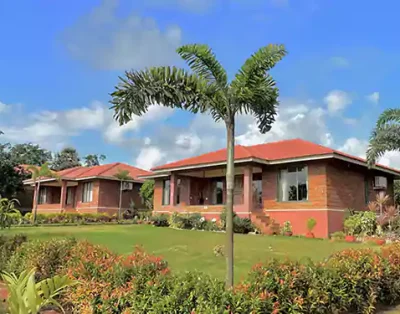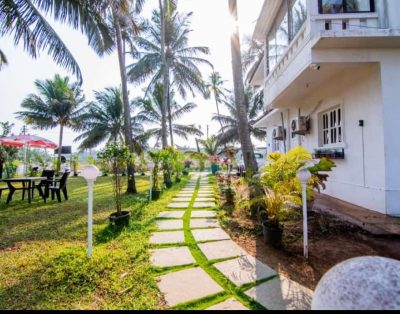Co-living Operators Raise share of ‘1BHKs’ amid Rising Demand

Accommodations with a single bed, hall and kitchen seen to offer more privacy & Comfort
Co-living spaces in India have gained significant popularity in recent years, particularly among young
Professionals, students, and expats. These spaces offer a blend of private living quarters and shared communal facilities, providing a cost-effective and community-oriented living experience.
Popular Cities Providing Co-Living Spaces largely
- Bengaluru: Known as the Silicon Valley of India, it has a high demand for co-living spaces due to its large population of young IT Professionals.
- Mumbai: The high cost of living and housing in Mumbai makes co-living an attractive option for many.
- Delhi NCR: Numerous educational institutions and startups drive the demand for co-living spaces in this region.
- Pune: with a growing IT sector and educational institutions, Pune is emerging as a key market for co-living.
- Hyderabad: Another IT hub, Hyderabad has a growing demand for co-living spaces.
According to recent reports, the demand for Private living arrangements within the co-livingSector has surged by 30% over the past year
The Rise of One-BHK Co-Living Spaces in India
In recent years, co-living spaces have revolutionized the housing landscape in India, particularly among young professionals, students, and expats. These shared accommodations provide a unique blend of private living quarters and communal facilities, offering a cost-effective and community-oriented alternative to traditional housing options.
The Growing Demand for Co-Living
The popularity of co-living spaces is on the rise, driven by the need for affordable and flexible housing solutions in urban areas. For many, the co-living model offers a sense of community and convenience that is hard to find in traditional rental arrangements. This appeal has led to the proliferation of co-living spaces across major Indian cities, each catering to the specific needs of their residents.
Key Cities Leading the Co-Living Trend
Several cities have emerged as frontrunners in the co-living movement, each with distinct characteristics that drive demand:
- Bengaluru: Known as the Silicon Valley of India, Bengaluru boasts a large population of young IT professionals, creating a substantial demand for co-living spaces. The city’s vibrant tech scene and dynamic lifestyle make it a prime location for co-living operators.
- Mumbai: The high cost of living in Mumbai makes co-living an attractive option for many residents. Co-living spaces offer a more affordable alternative to the city’s expensive rental market while providing a sense of community in the bustling metropolis.
- Delhi NCR: The presence of numerous educational institutions and startups has contributed to the growing demand for co-living spaces in Delhi NCR. Students and young professionals alike are drawn to the convenience and affordability of co-living accommodations.
- Pune: With its thriving IT sector and renowned educational institutions, Pune is quickly becoming a key market for co-living. The city’s youthful demographic and growing professional population are driving the demand for innovative housing solutions.
- Hyderabad: Another major IT hub, Hyderabad has seen a surge in demand for co-living spaces. The city’s tech-savvy population and expanding job market make it an ideal location for co-living developments.
The Shift Towards One-BHK Units
A significant trend within the co-living sector is the growing preference for one-BHK (Bedroom, Hall, Kitchen) units. Traditionally, co-living spaces featured double occupancy rooms and shared facilities. However, the COVID-19 pandemic has altered these preferences, with residents now seeking more private and comfortable living arrangements.
Co-living property operators have responded to this shift by increasing the availability of one-BHK units. These units offer a unique blend of privacy and community, providing residents with their own personal space while still enjoying the benefits of shared amenities. Over the past year, the demand for one-BHK units, where the kitchen is not shared with others, has surged by 30%.
Meeting the Evolving Needs of Residents
The rise of one-BHK co-living spaces reflects the evolving preferences of young professionals, students, and expats. As residents seek more privacy and independence, co-living operators must adapt to stay relevant in the competitive housing market. By offering a range of unit types, including one-BHK options, co-living spaces can cater to the diverse needs of their residents.
The growth of one-BHK co-living spaces in India underscores the changing dynamics of urban living. As the preferences of residents continue to evolve, co-living operators must remain agile and responsive to these trends. By striking a balance between community and privacy, co-living spaces can continue to thrive, offering affordable and attractive housing solutions that meet the needs of modern urban dwellers.
the co-living sector in India is witnessing a significant transformation. The rise of one-BHK units is a testament to the sector’s ability to adapt to the changing demands of its residents, ensuring that co-living remains a viable and appealing housing option for years to come.
Book your space only at www.holidayshomes.propertyplateau.com






Hi, this is a comment.
To get started with moderating, editing, and deleting comments, please visit the Comments screen in the dashboard.
Commenter avatars come from Gravatar.